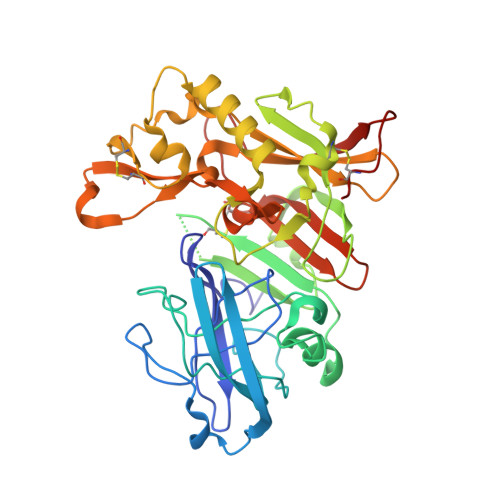Core Refinement Toward Permeable Beta-Secretase (Bace-1) Inhibitors with Low Herg Activity.
Ginman, T., Viklund, J., Malmstrom, J., Blid, J., Emond, R., Forsblom, R., Johansson, A., Kers, A., Lake, F., Sehgelmeble, F., Sterky, K.J., Bergh, M., Lindgren, A., Johansson, P., Jeppsson, F., Falting, J., Gravenfors, Y., Rahm, F.(2013) J Med Chem 56: 4181
- PubMed: 23126626
- DOI: https://doi.org/10.1021/jm3011349
- Primary Citation of Related Structures:
4B70, 4B72, 4B77, 4B78 - PubMed Abstract:
By use of iterative design aided by predictive models for target affinity, brain permeability, and hERG activity, novel and diverse compounds based on cyclic amidine and guanidine cores were synthesized with the goal of finding BACE-1 inhibitors as a treatment for Alzheimer's disease. Since synthesis feasibility had low priority in the design of the cores, an extensive synthesis effort was needed to make the relevant compounds. Syntheses of these compounds are reported, together with physicochemical properties and structure-activity relationships based on in vitro data. Four crystal structures of diverse amidines binding in the active site are deposited and discussed. Inhibitors of BACE-1 with 3 μM to 32 nM potencies in cells are shown, together with data on in vivo brain exposure levels for four compounds. The results presented show the importance of the core structure for the profile of the final compounds.
- Department of Medicinal Chemistry, AstraZeneca R&D Södertälje, SE-151 85, Södertälje, Sweden.
Organizational Affiliation:

















